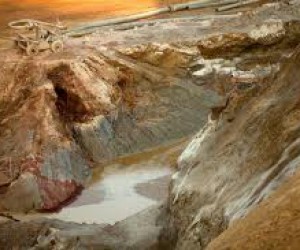A newly developed membrane used to separate waste from water could become key in the treatment of pollutants ranging from acid mine drainage to oil-containing wastewater, as well as in processes ranging from desalination to kidney dialysis.
The research has been published in a prestigious international journal, coinciding with World Water Day and falling within South Africa’s National Water Week.
The technology – which was developed by a team of researchers from Wits University, in collaboration with NASA – will make it easier to filter pure water from waste produced during mining, oil and gas exploration and production, and nuclear exploration, to name a few. Even medical purification processes such as kidney dialysis could benefit.
A commercial product will hopefully be developed soon, and there are plans to approach the United States government regarding its problems with contaminants such as arsenic, mercury and other heavy metals in US water.
Closer to home, the technology could make huge inroads in dealing with the major issue of acid mine drainage (AMD).
According to the head of the Wits School of Chemical and Metallurgical Engineering, Professor Sunny Iyuke, who developed the product in collaboration with two PhD students, the membrane module (similar to a household water filter) could be used to catch water waste from mines before it entered drains or the water table. Water flow analytics could be used to track the direction and location of any escaped wastewater, where another membrane module (in the form of a borehole) could be stationed.
The nanocomposite membrane gives two products: a smaller amount of concentrated waste and water so clean it could be drinkable. The waste could be reused, as in the case of arsenic, which is used in preservatives for wood and leather, ammunitions manufacturing and pest control. Even the waste from AMD could be reused.
“Water is critical to sustaining life, and water scarcity is becoming a huge problem – not just in South Africa, but all over the world,” said Prof. Iyuke. “This technology produces a win-win situation, for industry and the environment.”






